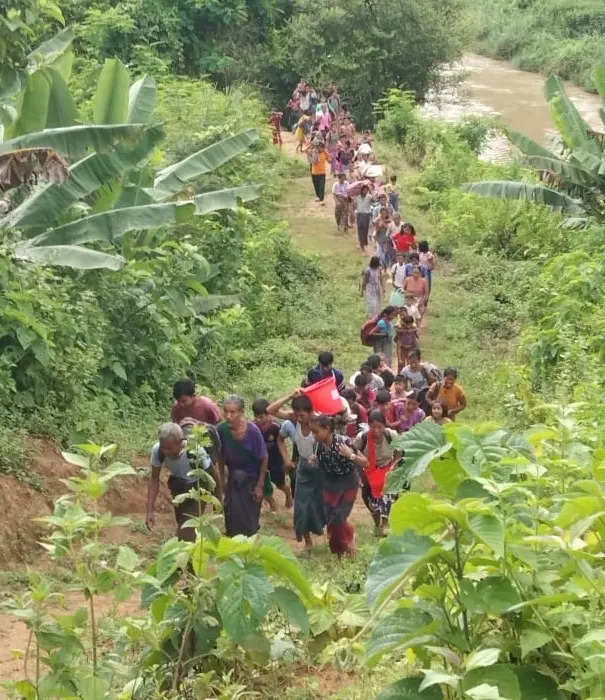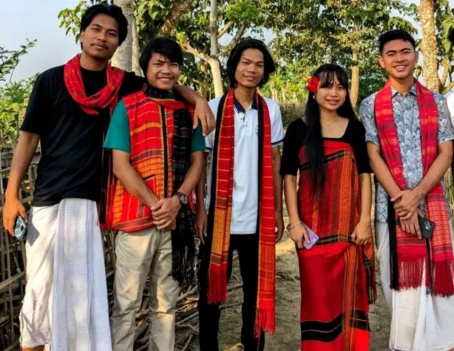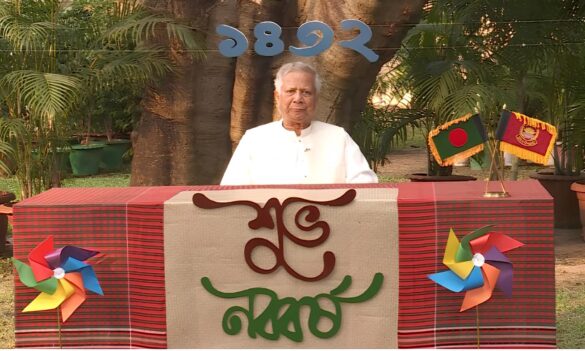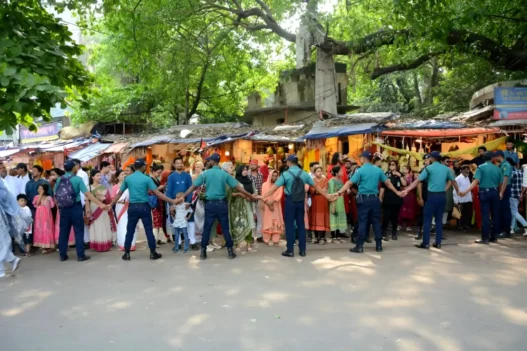The continuous influx of refugees from Myanmar into Manipur has been the reason for much heartburn and has sparked ethnic tensions and anxieties mostly arising out of apprehensions over the use of land and “limited” resources. Unlike the Mizoram government’s response to the humanitarian crisis wherein refugees mostly from the Chin community have been accommodated as “ethnically Mizo brethren,” the Biren Singh-led Government in Manipur sees this as a threat.
Thousands of refugees from Myanmar have fled their homes due to persecution and violence since the military coup on the 1st of February, 2021. Apart from Thailand where many are lodged in various places along the Thailand-Myanmar borders, others mostly from the Chin State and some from the Sagaing division are seeking safety and refuge in the Indian states of Manipur and Mizoram. Numerical estimates of the refugees in Manipur keep it somewhere between 5,000 and 10,000.
India and Myanmar share over 1,643 km of border. Manipur lies to the north of Mizoram and the Chin and Sagaing states of Myanmar border Manipur and Mizoram.
In Manipur, there have been calls from various civil society organizations like the United Naga Council (UNC) and Coordination Committee on Manipur Integrity (COCOMI) to weed out the refugees from Myanmar citing permanent changes in demography and political clout. To this end, a protest has been held demanding the implementation of the National Register of Citizens (NRC) in Manipur.
With a change in the State immigration policies, the Manipur government has begun to address what it terms an influx of “illegal migrants” from Myanmar, which is essentially a process of identification of Myanmarese nationals who have crossed over to the State mostly believed to be through Moreh and Behiang for refuge.
Ministers of the Biren Singh-led Manipur Government composed of Letpao Haokip, Awangbow Newmai, and Th Basantakumar Singh visited the Singngat area in Churachandpur District on March 26, 2023, and picked out a site for the building of shelter homes for those fleeing Myanmar. This is the third shelter home, proposed for Myanmar refugees. The other two shelter homes are in Chandel and Tengnoupal districts.
The Singngat shelter home will be built within the premises of Singngat Police Station. There will be a total of four buildings with a total capacity of 200. Their movements outside the facility will be strictly regulated. Haokip also said that ID cards will be provided to the refugees and their biometrics recorded. Their basic necessities like food, lodging, and health services will be taken care of by the government. He also urged those refugees to voluntarily report themselves to the Deputy Commissioner. However, the refugees will have to leave India as and when political conditions in Myanmar stabilize.
It remains to be seen whether the building of shelter homes for the Myanmar refugees will solve this issue. Many refugees have expressed their desire to instead stay in rented accommodation and remain reluctant to voluntarily go to shelter homes. One crucial aspect of these shelter homes is the questions of whether adult refugees will have opportunities to earn their own livelihood, and the children refugees are provided with basic vocation and educational requirements.
The Mizoram government has extended support to the refugees from Myanmar, providing them with allocated land for settlement, while basic necessities like drinking water, toilets, electricity, blankets, food, and clothes have been provided for by various NGOs, the local church, and the Young Mizo Association (YMA). The Mizoram government also issued temporary ID cards, containing basic details like names, original places, and current residence to the refugees. However, these IDs are merely for identification and won’t allow them to vote in local and state elections.
So far, hundreds of Myanmar nationals have been arrested and detained in the villages along the international border following crackdowns by the Manipur bureaucracy and police. Around 170 of these refugees have been jailed in the Imphal Prison.
However, the identification of these refugees has been far from easy. The Chin refugees share historical, linguistic, and cultural ties with their Zomi, Kuki, and Mizo brethren on the Indian side. Since they share lots of kinship and cultural ties, they are believed to receive humanitarian aid in terms of food and shelter from the villages on the Indian side.
The Manipur government (illegal) immigrant hunt to each household in bordering villages has left the Village chiefs and councils hapless in providing humanitarian aid and shelter to the refugees. Several villages such as the Hebron Veng Village Authority in Churachandpur District came out in support of the government initiative on 1st March 2023, through its notice directing the villagers to cooperate the government in identifying illegal immigrants. The Deputy Commissioner of Churachandpur has also issued notice on 31st March 2023 to refrain the village authority and the public from providing any accommodation to the refugees.







